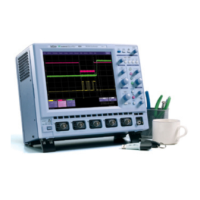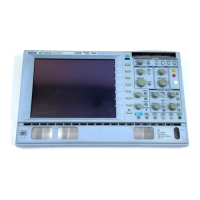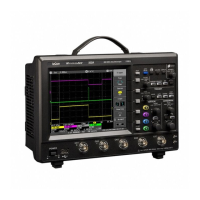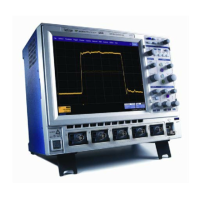WaveSurfer DSO
WS-OM-E Rev B 87
WAVEFORM MEASUREMENTS
Measuring with Cursors
Cursors are important tools that aid you in measuring signal values. Cursors are markers — lines,
cross-hairs, or arrows — that you can move around the grid or the waveform itself. Use cursors to
make fast, accurate measurements and to eliminate guesswork. There are two basic types:
• Horizontal (Time) cursors are markers that you move horizontally along the waveform.
Place them at a desired location along the time axis to read the signal’s amplitude at the
selected time.
• Horizontal (Frequency) cursors are markers that you move horizontally along an FFT
math waveform. Place them at a desired location along the frequency axis to read the
signal’s amplitude in dB at the selected time.
• Vertical (Voltage) cursors are dashed lines that you move vertically on the grid to
measure the amplitude of a signal.
Cursors Setup
Quick Display
At any time, you can change the display of cursor types (or turn them off) without invoking the
"Cursors Setup" dialog as follows:
1. On the front panel, under “Cursors,” turn either cursor control knob or
push the Type button. This turns Horizontal (Time) cursors on. Push
the Type button again to advance to Vertical (Amplitude) cursors. If
you have an FFT math trace displayed, a third push of the Type
button will switch the cursors to Frequency cursors; otherwise, it turns
cursors off. Alternatively, in the menu bar, touch Cursors, then Off,
Horizontal (Time), Horizontal (Frequency), or Vertical (Amplitude)
in the drop-down menu. The cursors displayed will assume the
positions previously set up

